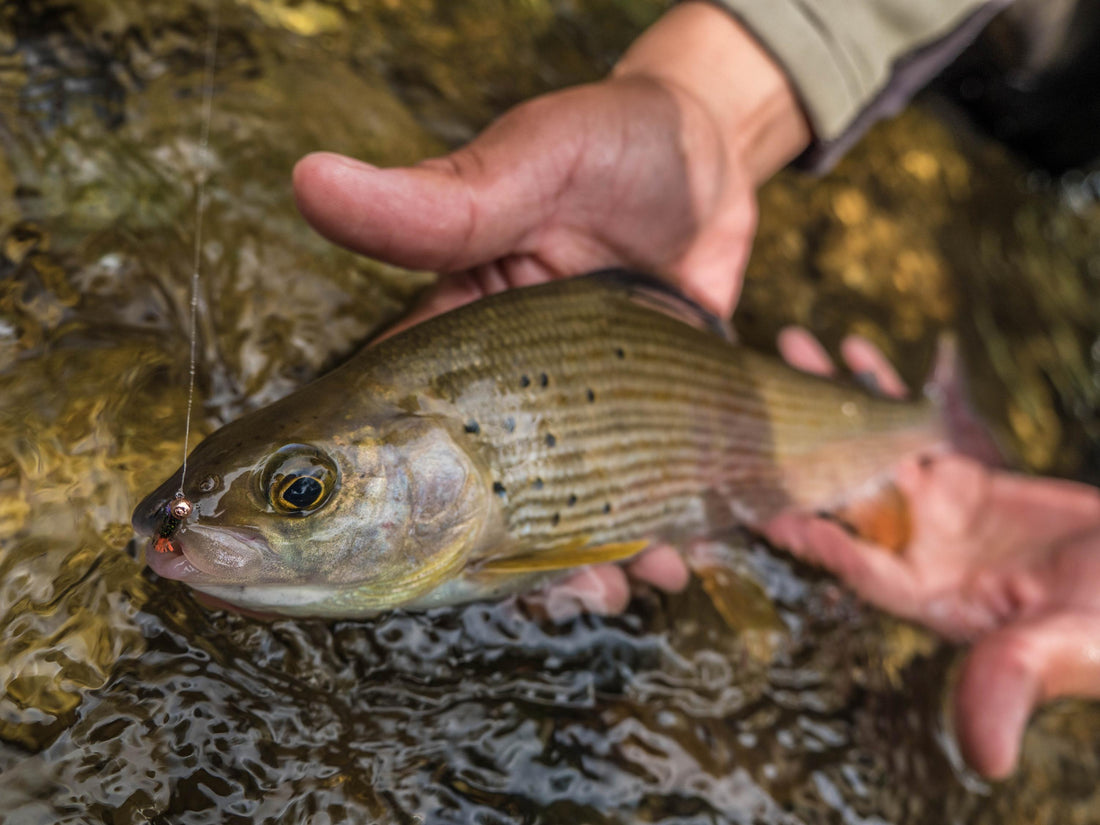
2017 World Fly Fishing Championships in Slovakia Part One
Share
2017 World Fly Fishing Championship Introduction and Session 1
My Fly Fishing Team USA mates and I recently traveled to Slovakia for the 37th World Fly Fishing Championship that occurred the 5-11th of September. Our team was comprised of myself, Lance Egan, Pat Weiss, Josh Graffam, Norm Maktima, Russ Miller, our captain Bret Bishop, and our manager Jerry Arnold. After two years of consecutive team and individual medals and several other recent top 5 finishes, we were more than disappointed to finish 14th this year, our worst team finish since Poland in 2010.
If I had one word to describe our struggles, or actually one fish, it would be grayling. Imagine if you had one week every few years to learn how to catch brown trout. You would likely catch some but you wouldn’t know the specific habits for habitat, flies, and presentation that they favor as well as another angler who had targeted them their entire life and had come to know their peculiarities that make them different from other fish. When we show up at a World Fly Fishing Championship where European grayling are the dominant species this is the exact scenario we face. Our team is used to targeting trout plain and simple. Many of the European teams target grayling as their primary species or at least regularly. While we obviously still hoped to compete at a high level this year, I don’t know that any of our team members went in feeling highly confident that we would despite our recent success. And everyone knows that when you don’t fish with confidence, the results are poor as they were for us this year.

A lovely grayling from the Revuca River that fell for a Blowtorch variation during practice.
Compounding our lack of grayling experience this year was the lack of opportunity to learn more during our practice days. We arrived 3-4 days later than most of the teams. There was limited practice water that was adjacent to the competition venues. What practice water there was had been pounded by the time we began our practice and we shared the water with many teams each of our practice days on the competition venues. The increase in fishing pressure from such high caliber anglers made it difficult to put together fly patterns and strategies that we felt would be best for each of the competition venues. Many of our fish seemed to come in more of a haphazard rather than a regular fashion. The only venues we were able to have much consistent success targeting grayling on were several smaller rivers that weren’t part of the competition and hadn’t received much fishing pressure as a result. These were helpful and enjoyable practice days and they did provide information that was crucial for me on the smaller rivers.
In the end, while the results weren’t what I nor we as a team wanted, I did learn some good lessons during practice and the championship that I will share in my posts about each of the sessions. I also walked away grateful for another amazing opportunity to represent the USA with my teammates and a renewed vigor to train harder this year so that I can hopefully contribute to another successful championship with my teammates in Italy next year.

The Orava River with its namesake castle towering above.
Session 1: Orava River
The Orava was a large river (60-100 yards wide) and a challenging venue for me personally. In addition to being wide, it was one of the first rivers at a world championship that has had long beats as well with some of the beats being 400 meters or more (mine was around 250 m long). With a large river and long beats, the challenge became deciding what was your best water to focus on instead of the normal necessary strategy of finding every holding lie in typically short beats. During practice the water was high and turbid following some heavy rain. We only had one morning to fish there and I had very little success during our practice session. As a result, I went with my teammate Josh to fish it during the official practice the day before the tournament started. We found some grayling during the practice session, mainly in skinny riffles. However, the practice water was a fair distance below most of the beats and had a much lower density of grayling than the middle and upper beats so it wasn’t entirely reflective of what many competitors experienced. My best fly during the practice session was a blowtorch variation so I went into my first session with it being my main confidence fly and I planned to sort through some of the other flies we had caught grayling on as a team in the other rivers.
My beat was number 19, a bit below the more favored upper beats, and featured one long run that started with steep shallow riffles at the top. The riffles funneled into a fairly swift run that then gradually spread out and slowed toward the middle of the beat and became a wide and slow glide near the bottom. I planned on trying to fish from the transition of the run into the glide and quickly progress upstream until I found a pod or two of grayling that I could focus on and then return to late in the session.

The bottom of my beat's run looking upstream

Looking down at the lower half of my beat.
I started with a dry dropper rod for the slower water but had no success in the first few minutes while the Belgian above me got off to a hot start. This upped the pressure and I opted for my nymph rod and a quicker progression through the back end of the run. Eventually, about 20 minutes into the session, I found a small group of grayling around a lone rock near the back end of the run. I was able to get four or five fish in quick succession around the rock before the well ran dry and I moved further on.
Several of the grayling came to what we ended up referring to as “grayling drifts” instead of “trout drifts” during our practice days. Pat and Josh had noticed that the grayling in several of the rivers favored a drift where the rod was stopped at the midpoint of the drift and the flies were allowed to get slightly downstream before the rod moved downstream again and followed them to the terminus of the drift. This lifted the flies a bit during the middle of the drift and then slowed their progression during the latter part of the drift where they were typically eaten. The strategy also improved strike detection because of increased tension that transmitted light grayling takes more readily. It also kept the flies in the same lateral seam of current instead of swinging across the river as is common with a down and across presentation. This isn’t the typical drift I’m most often used to but it worked for the grayling in Slovakia. It hasn’t been as reliable for trout since returning home but there have been some instances in slow to mid-speed water where I’ve found success with it and it has inspired me to break out of my mold and continue to experiment with drift alterations.
I continued to nymph a grayling here and there through the rest of the run but I didn’t find another area where I caught multiple fish in a small radius. I expected to catch good numbers of fish from the head of the run. If it was a trout river back home they would have been stacked there but after a focusing on the area for a while I only had three grayling to show for it. The Belgian above me continued to bring fish back to his controller regularly so I decided to go fish the shallow riffles at the top of my beat and try and look at the characteristics of the water he was having success in. In the top most part of the riffle there was a shallow depression I expected a few fish in. I tried a succession of drifts with nothing to show for it but I saw a fish flash and knew there was at least one fish to be caught. I switched patterns on the point to a #14 Frenchie since there were some largish mayflies around. On my first cast the fish ate, though it took the #18 blowtorch that was still on my dropper. The Frenchie had the same size bead as the prior fly but was a size larger and a tiny bit heavier. Something about it changed the drift just enough that the fish took.
Though there was another shallow riffle or two to probe at the top of the beat I didn’t return to the area. After briefly watching where the Belgian was fishing I saw that he was getting most of his fish in water that was calf to knee deep with a medium speed and a slight bump to the surface. There was a small zone about 2/3 down my run that I thought was similar. I quickly fished my way down to this area. Upon arriving I caught a fish on my second drift and I landed five more in the area in the next 15 minutes. The action slowed though and I decided to put a few minutes into chasing chubs (a coarse fish that was counted during the competition only on the Orava River) on a separate rod with swung wet flies under the trees because I had spooked quite a few of them in the area where I had brought fish back to my controller. Unfortunately, I had put a new leader on the night before and hadn’t tested it thoroughly. The rig wasn’t accurate with the line and rod combination I was fishing and in the heat of the moment I struggled to place my flies in pinpoint locations tight to the banks where the chubs preferred to hold. I wasted about 10 minutes on this strategy before giving it up with nothing to show for it.
At this point I only had five minutes left so I sprinted back across the river and grabbed my nymph rod. I switched the point fly and landed one more grayling from the pod I had found previously before the session ended. I ended up with 19 fish for the session. The Blowtorch variation caught the bulk of my fish during the session with Norm’s Red Tag Mayfly and Pat’s Tracksuit rounding out the rest. I’ll ask Norm and Pat if I can share these patterns in future tutorials.
While I didn’t have one of the beats that kicked 50+ fish like the upper beats, there were certainly more fish to be caught as evidenced by the 31 fish that French angler Julien Daguillanes (last year’s world champion and 4th place this year) caught in session 5. Overall, while some observation of the Belgian angler above me saved me from an abysmal session, I was not very happy with the way I started my world championship. The time I spent fishing for chubs was wasted and I failed to find groups of fish early in the session that I could have focused on later in the session. It showed in my results.
In my next post I’ll take you to my session on the Bela where I was able to turn around the latter half of the day.
